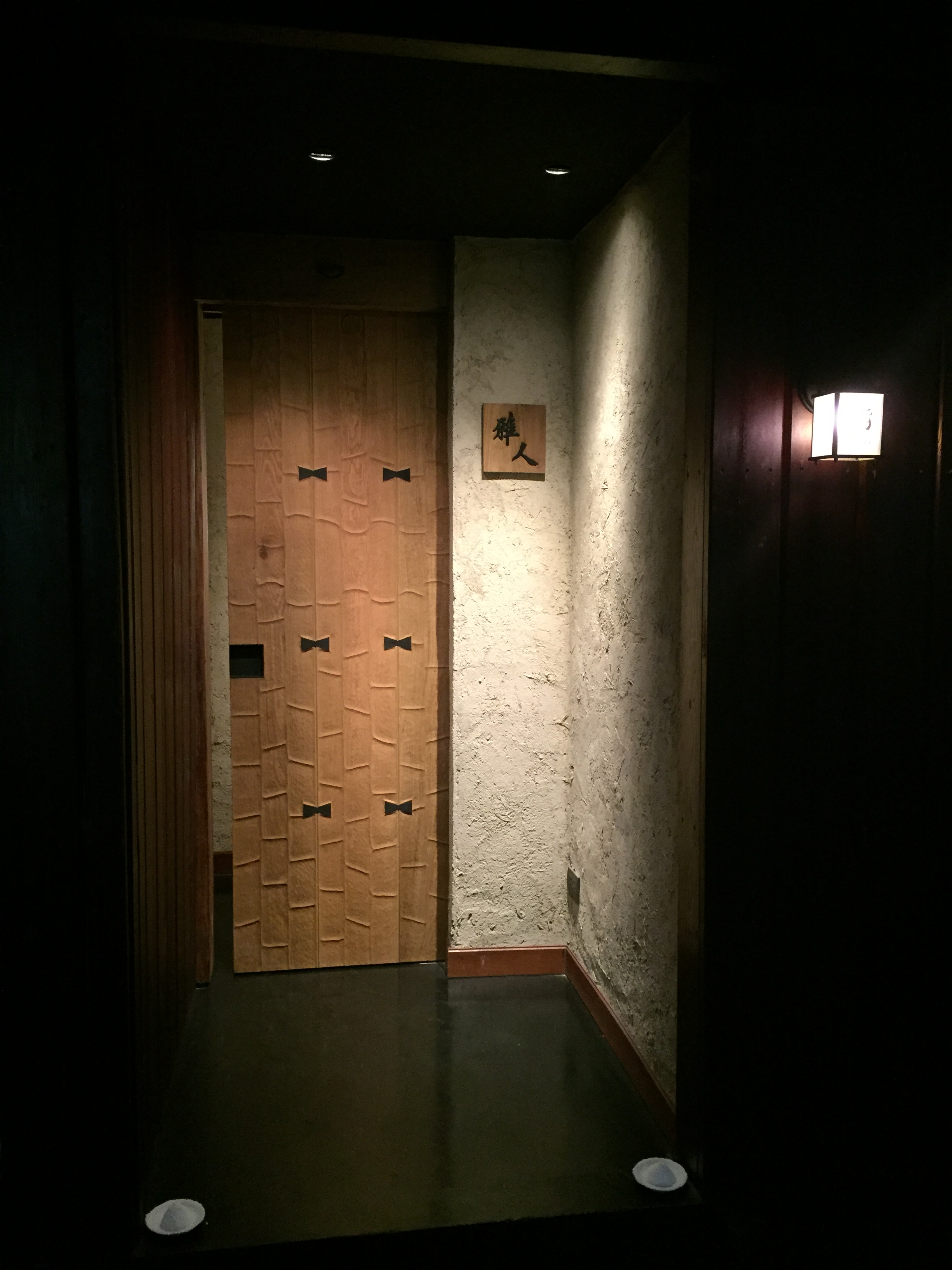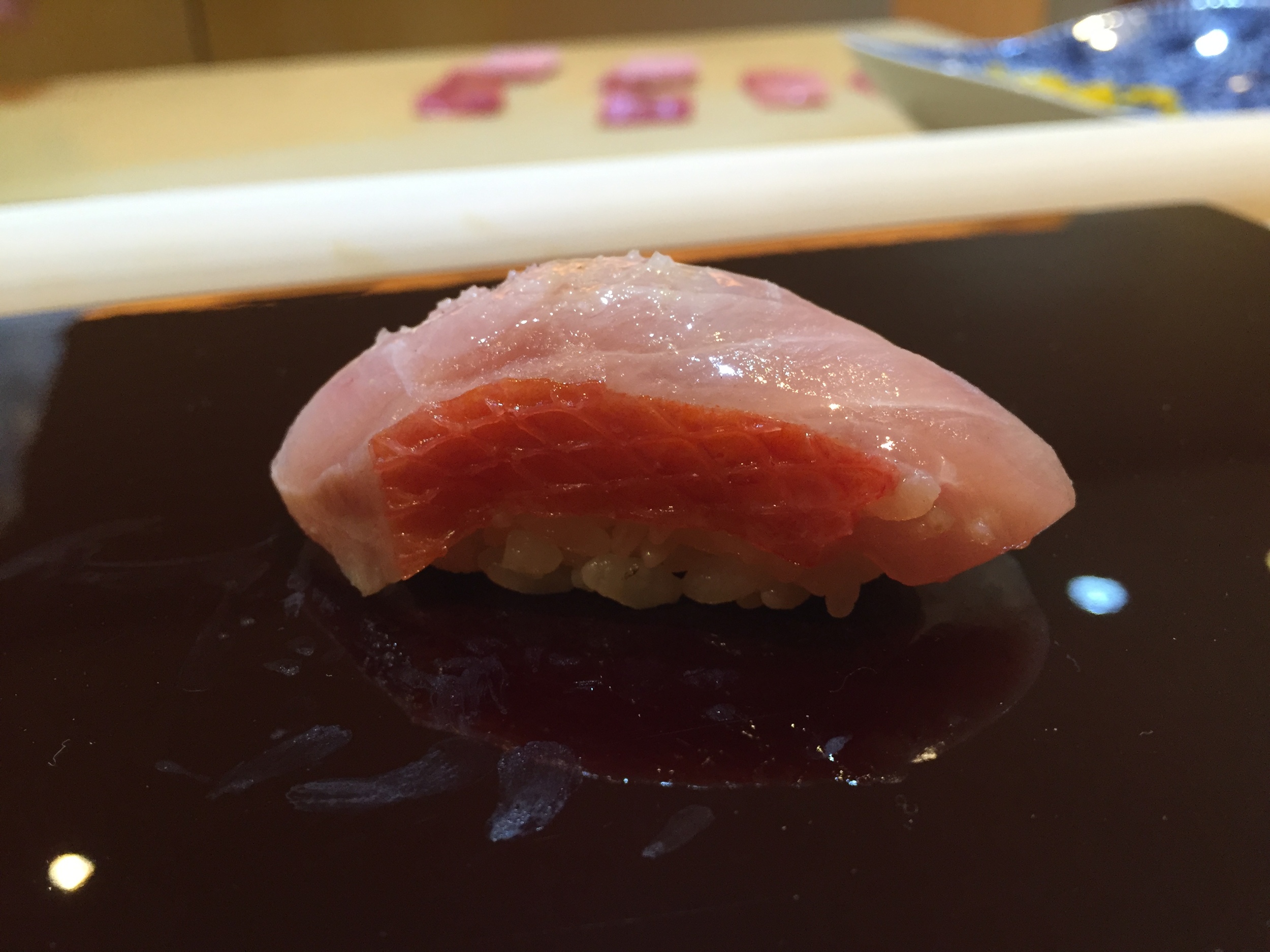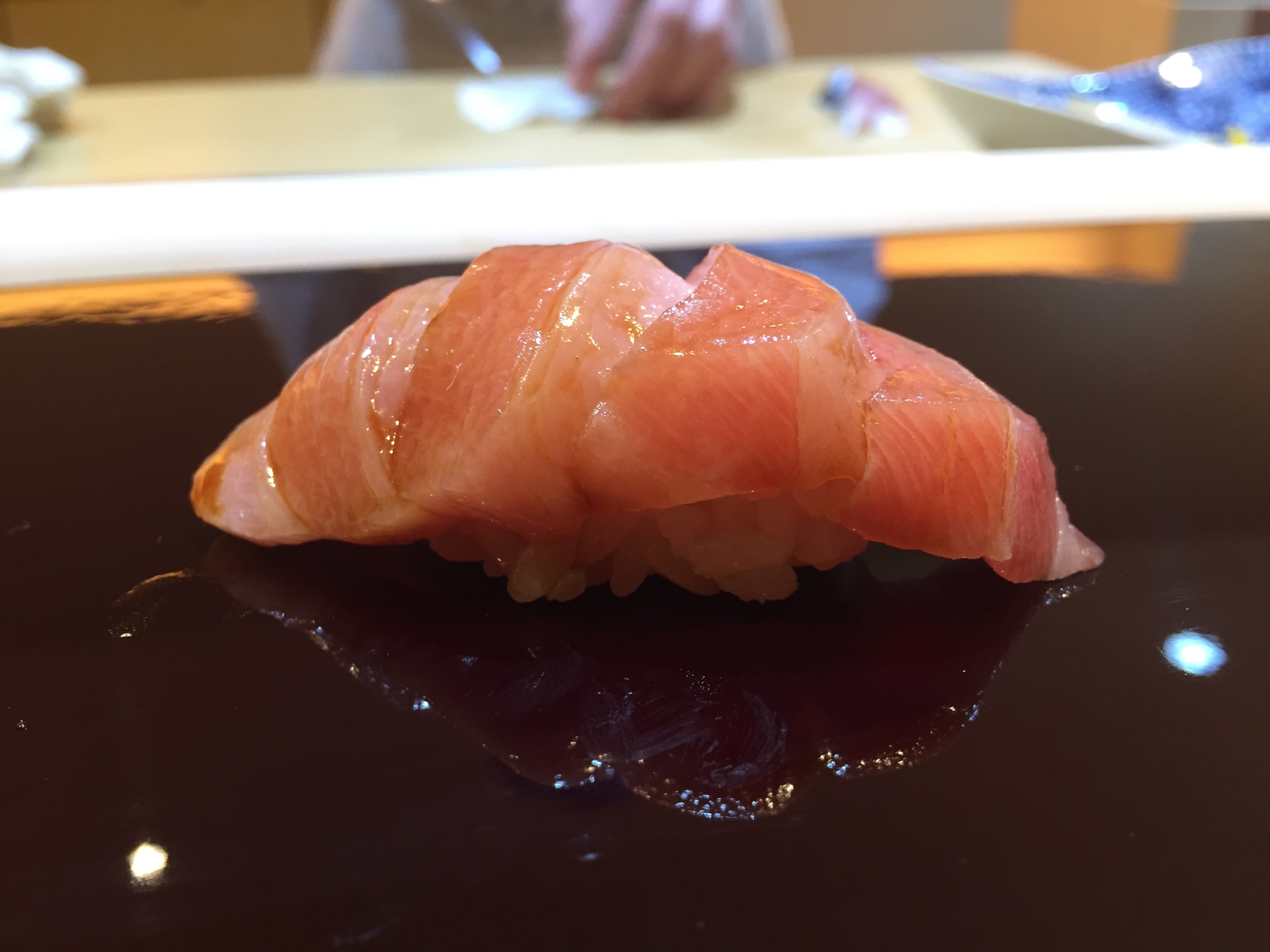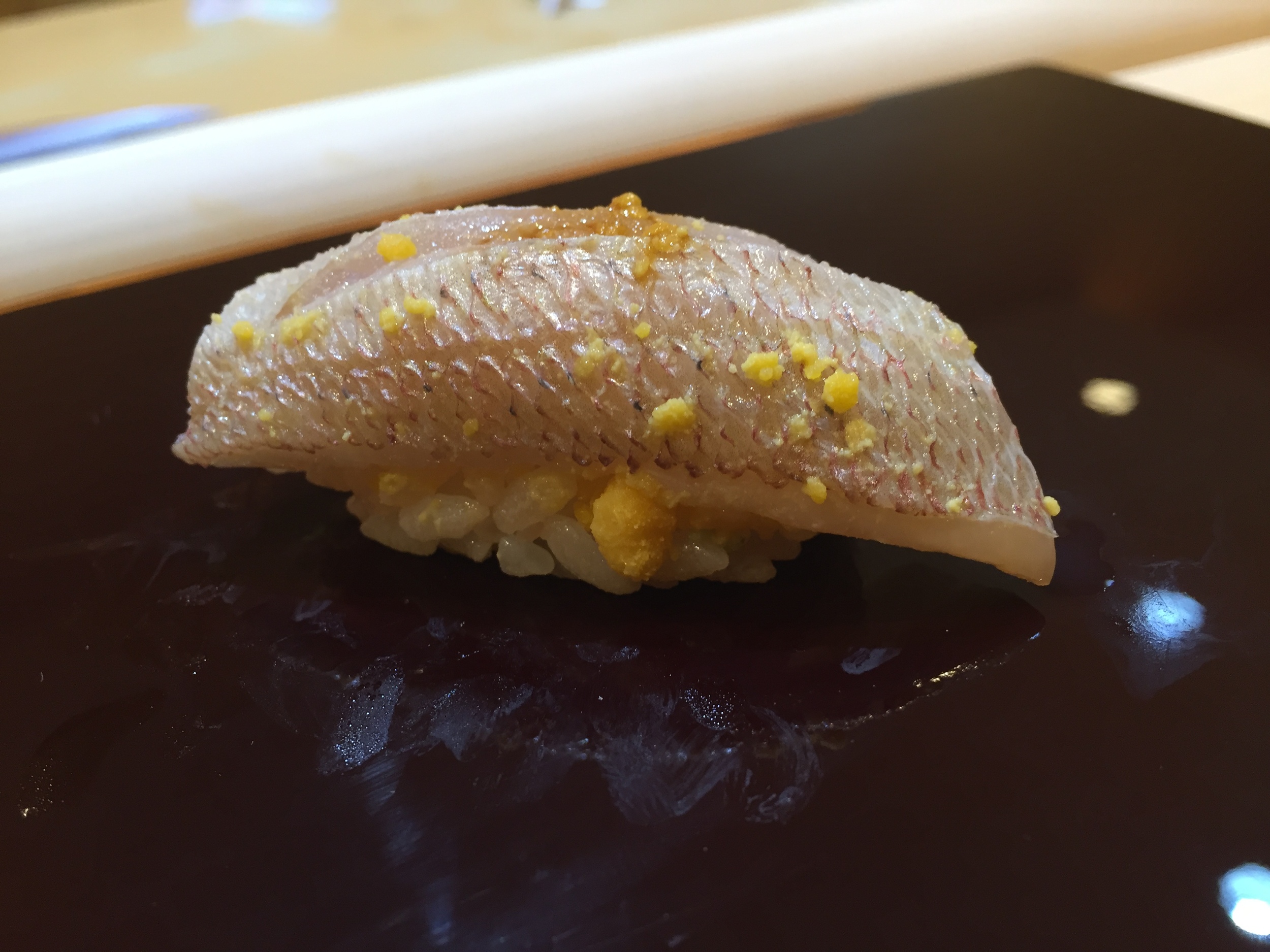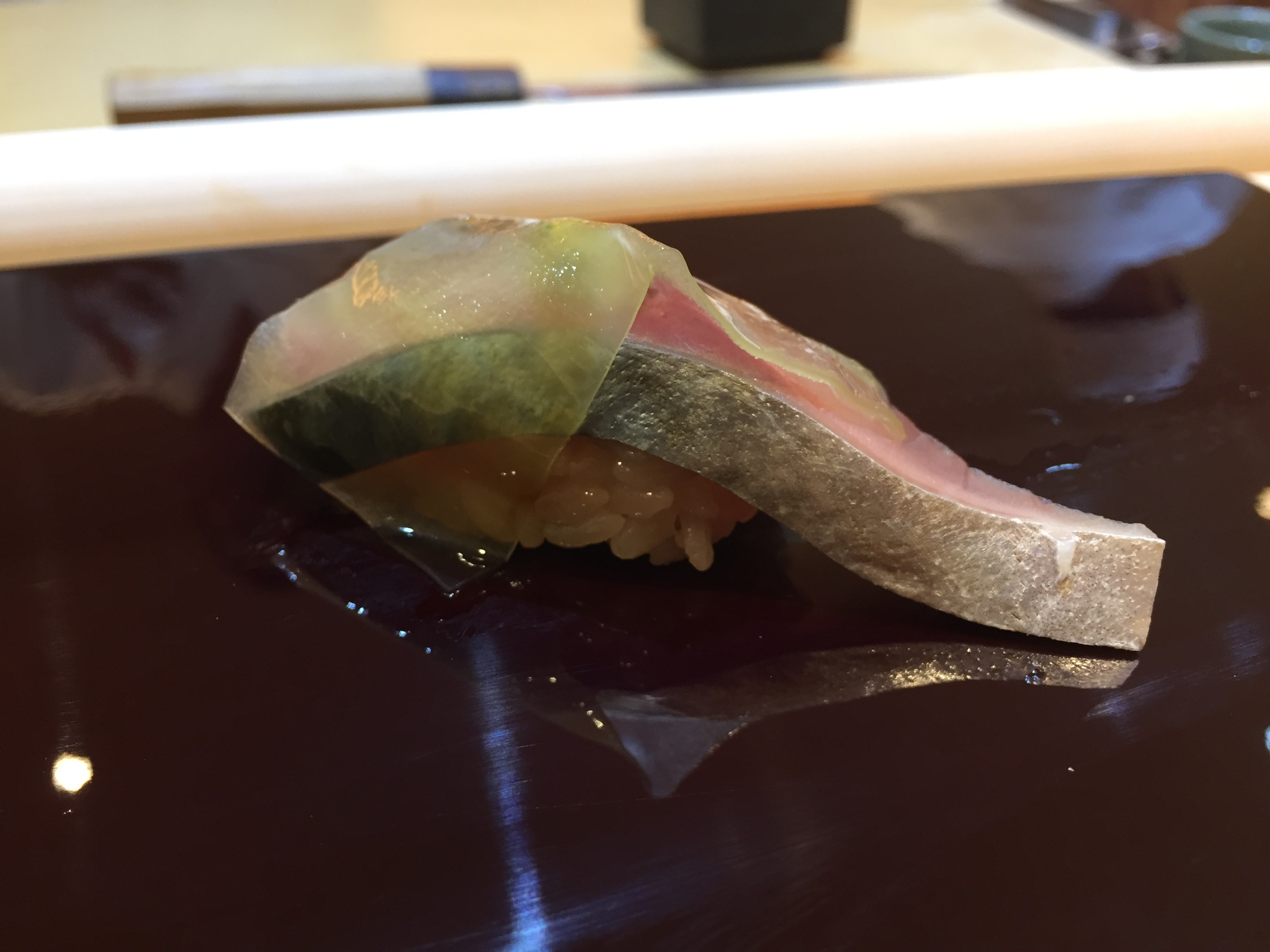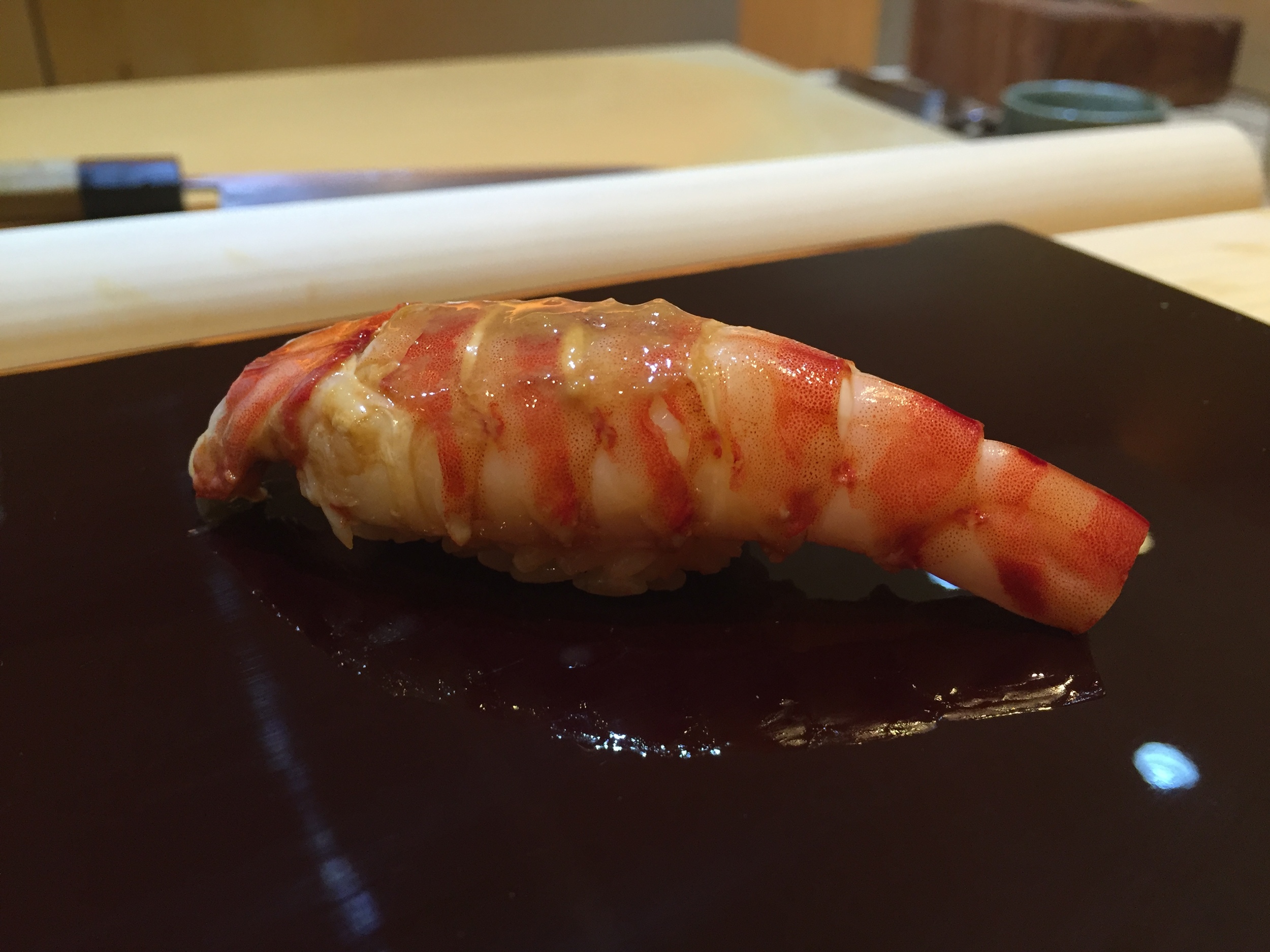- Cost: 4000bht/person, before drinks, tax, tip
- Size: 10 seats at counter, plus two booths
- Style: tsumami + sushi omakase
- Reserved: 6 weeks in advance
Bangkok is a bit of a peculiar place for sushi. It is near enough to Japan to access top-quality fish, and amongst its wealthy class, has a surprisingly highly-developed jetset-fine-dining culture. As a global city just somewhere on the borderline of a developing/developed economy, it thus has a surprising amount of high-end sushiya - not least of which is an outpost of Ginza's Sushi Ichi, where meals can run up to 10000bht, or about $300 USD.
So in some respects, when Masato Shimizu left his Michelin-starred NY sushiya to open in Bangkok, it was a step-up in challenge. After my meal there, I can say with confidence he is meeting this challenge. Shimizu-san's style has not changed a whole lot - the key elements are all there: excellent knife skills, excellent balance on sushi, simple but well-executed tsumami, and shari fairly firm, served at body temperature.
But as Shimizu-san has opened his new shop, he has sought to continue to learn and evolve his techniques. This is one sign of a true shokunin who understands one's craft can always be improved. One example is the akazu-seasoned shari, tempered with a small bit of sugar, resulting in a slightly stronger and more complex impact from the rice, without overpowering or intruding on the flavors of the neta. The akazu blend that Shimizu-san uses is one that evolved after several weeks of experimentation. Taking a cue from Koji Sawada, Shimizu-san is toasting kinmedai with hot bincho (Japanese charcoal) rather than a blowtorch (I can't say the result was on the level of Sawada's tsumami, but this is a technique that is fairly rare to find, even in Japan).
Another notable difference is that Shimizu-san has access to an entirely new tier of neta due to proximity to Japan. The kuruma ebi he prepared approached the highest-regarded shops in Tokyo in its succulence and balanced sweetness. Torigai and sumi-ika with salt and yuzu (the latter being what I consider one of Shimizu-san's signature pieces) were also at the highest level.
Shimizu-san's price point (he recently raised prices from around 3000bht to 4000bht - about $80 to $120 USD) is unbelievable cost-value. It is to be expected that at this level, not all of the neta is absolute top-tier, but this fact was really of no concern during my meal as everything served was quite enjoyable. There are perhaps some sushiya in fishing regions like Kanazawa, Hokkaido or Kyushu that might provide similar value for quality, but this is certainly the best I have ever experienced. Most importantly, the quality from tsumami to tsumami and nigiri to nigiri was consistent. It's difficult to emphasize how much that contributes to the enjoyment of a sushi meal.
What is most exciting, perhaps, is that Shimizu-san is just getting on his feet and has been doing the bulk of the prep work for everything in the shop himself. No doubt he will continue to improve and refine his process as time goes on (and certainly, some items like the tamago, kanpyo and tsume will benefit from additional skilled help).
Shimizu-san opened in January, and by the time of my visit about 6 weeks later, was booked through May. This kind of reservation queue is difficult to find outside of the world's top sushiya in Tokyo. So is it due to the cost value, which truly is outstanding? Maybe. But I think it might be something else. During my meal there, Shimizu-san was friendly but not pushy - he knew most of his returning-customers' names. He was quick to pull out his fish glossaries or explain what he was serving with genuine enthusiasm and passion. It was this attitude that earned Shimizu-san a legion of regulars when he was in New York, and is really no different in Bangkok. It is indeed exciting to see him succeed at a new level of his craft with a new group of fans.
